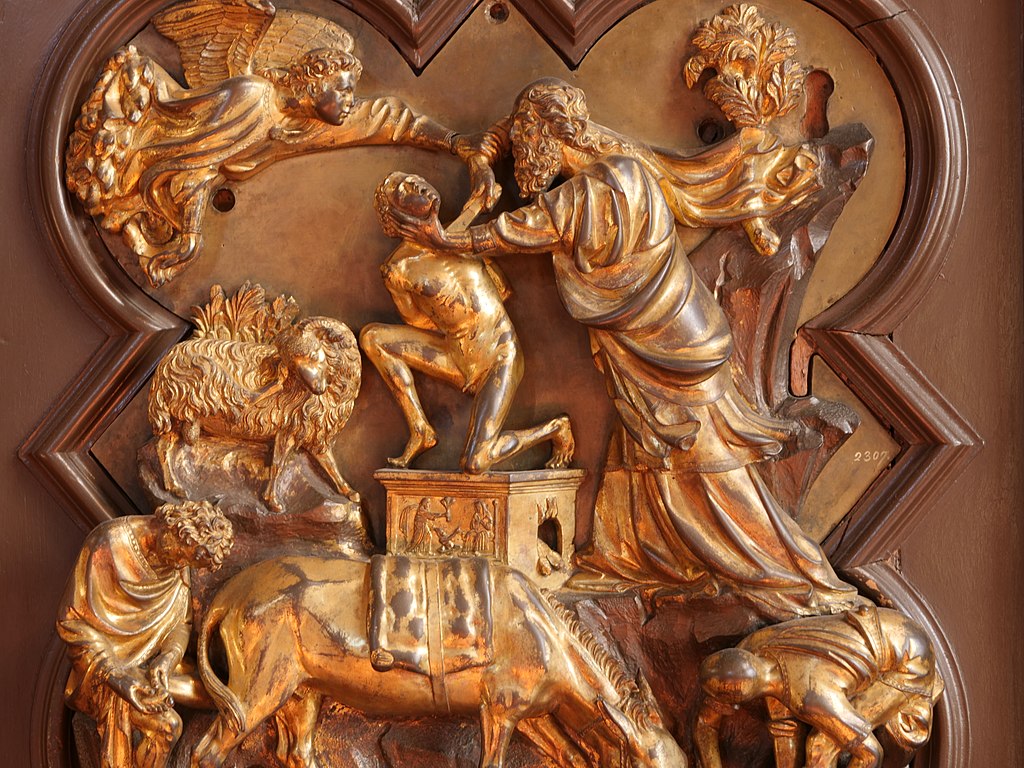
“Sacrifice of Isaac”, c. 1603, Carravaggio, Ufizzi, Florence
Caravaggio shows the terrible moment when Abraham has put forth his hand and taken the knife to slay his son (Gen 22:10). But an angel on the left stays his hand and points to a the ram on the right. From very early on Christians understood this story to prefigure the sacrifice of Christ. “The sacrifice of Abraham” is mentioned in the First Eucharistic Prayer and a number of depictions of this scene are to be found in the catacombs of Rome. Caravaggio’s version does not spare us from the terror of Isaac and the violence of Abraham’s grip. However, the most arresting element is the expression of Abraham. In fact, there are echoes of a famous relief in bronze of the same subject by Brunelleschi. In 1401 Brunelleschi submitted a trial panel of this scene for the Baptistry doors in Florence. He didn’t get the commission but the panel survives.

In Brunelleschi’s panel, Abraham grips Isaac violently by the neck with his left hand and with his right presses the knife against his neck. Abraham does not look at his son but stares at the angel who stays his arm. Caravaggio uses a three-quarter length format to draw us into the action. His angel is a strong youth whose extended arm leads the eye to Abraham’s hand and to the knife. The blade catches the light and stands out against Isaac’s pale flesh. As in the Brunelleschi panel Caravaggio has Abraham stare back at the angel. His expression is intense but very hard to read. More than the violent act intimated below by the cluster of hands, it is Abraham’s enigmatic expression which will hold the viewer’s attention. The angel points in the direction of the ram but also towards the landscape behind and the sky at dawn. The landscape could be one Caravaggio knew near Rome and the building on the hill looks like a church, linking the event on the mountain with contemporary faith in Christ.
The Catholic Chaplaincy serves the students and staff of the University of Edinburgh, Edinburgh Napier University and Queen Margaret University.
The Catholic Chaplaincy is also a parish of the Archdiocese of St Andrews and Edinburgh (the Parish of St Albert the Great) and all Catholic students and staff are automatically members of this parish.